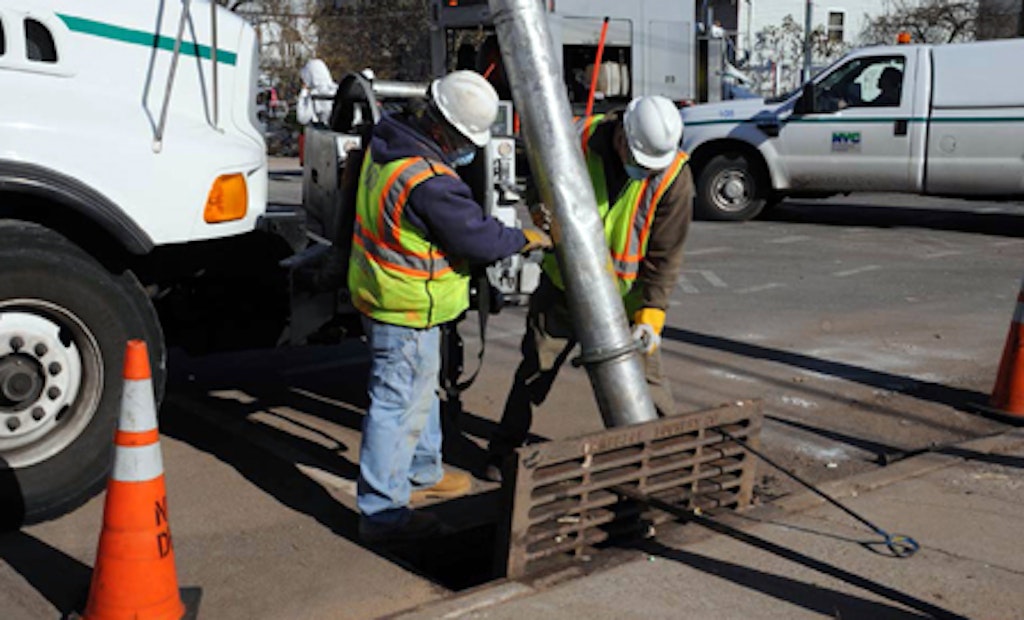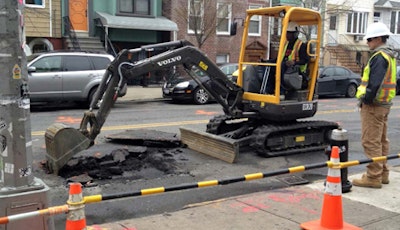
Interested in Education/Training?
Get Education/Training articles, news and videos right in your inbox! Sign up now.
Education/Training + Get AlertsThe New York City Department of Environmental Protection’s recently released report, State of the Sewers 2013, takes a hard-nosed look at the system, outlining innovative tools and methods used to operate and maintain its infrastructure and setting out performance-based standards by which to judge its efforts.
Jim Roberts is deputy commissioner for water and sewer operations. He oversees an annual capital budget of between $300 and $500 million and manages 7,500 miles of sewer pipes that carry an average of 1.3 billion gallons of wastewater per day.
“Our second annual State of the Sewer Report really dovetails with the implementation of a more metric-focused, data-driven management approach utilized within our agency during the past four years,” he says. “It’s inspired by our desire to be as transparent as we can to ratepayers about where our money goes and to utilize our resources as effectively as we can.”
Roberts admits that the proposition of publicizing performance metrics is a two-edged sword. While it provides a standard by which to mark the department’s successes, it also holds it accountable for programs, policies and performance that don’t live up to expectations.
Demonstrated success
However, many of the DEP’s hard metrics are demonstrating marked improvement. Between July 2012 and June 2013, the DEP cleaned 764 miles of sewer, an increase of 126 percent over the same period in 2009. Between June 2009 and July 2010, field crews took an average of 5.8 hours to respond to and resolve sewer backup complaints. Between July 2012 and June 2013, that number had decreased to just 4.4 hours. In 2010, catch basin calls were resolved in an average of 8.4 days. This year, crews resolved them in 3.1 days on average.
“My agency is the first responder to any complaint, from the moment a drop of water hits the street,” Roberts says. “We track ourselves on key metrics and at quarterly management meetings we look at what’s working and what isn’t and what we can do to make it better.”
Roberts notes that the improved performance metrics were recorded despite Hurricane Sandy.
“It impacted our sewer system, but not nearly so horrifically as some of the other utilities,” he says. “The bulk of the effect was on the collection system along the low-lying areas of the southern shores — it was like a 12-foot snowstorm made of sand. We went back several times with a task force and cleaned, cleaned and cleaned again, but it didn’t knock our metrics off kilter.”
Tools and technology
The DEP is also investigating the effectiveness of new technology.
Since 2012, it has installed 64 remote sewer monitoring devices on manholes in Brooklyn, Manhattan, Queens and Staten Island. The devices are designed to measure the elevation of wastewater and send out pre-emptive warnings.
The good news: DEP crews have so far responded to 129 alerts of confirmed sewer surcharge. The bad: DEP crews have also responded to 155 false alarms.
“The investments we’ve made thus far are modest,” Roberts says. “We’ve had some false alarms and we’re working through the efficacy of that technology. We think it does have a role, but it’s simply another tool in toolbox — not the do-all and end-all. We’ll see if we can iron the quirks out or perhaps try a different model.”
Flow monitors have also been installed at the bottom of sewers to determine whether they can demonstrate that changes in flow rates reflect blockages or sewer damage.
The DEP is also testing the effectiveness of new tools. In March 2013, more than 50 employees in its Brooklyn repair yard were trained on the use and operation of mini-excavators. It’s part of a pilot program designed to determine if employees can take over for private backhoe contractors on such jobs as fire hydrant repair and replacement.
“We want to see if we can do more with in-house labor,” Roberts says. “Although the jury is still out, the results are more positive than negative. We’re trying to see how this particular widget works most effectively.”
Public outreach
The DEP is currently testing a public outreach program designed to educate residents about the fat, oil, and grease buildup in sewer lines that was responsible for approximately 60 per cent of confirmed sewer backups in the city last year. In January 2013, the DEP collaborated with the New York City Housing Authority, targeting one housing development with intensive educational outreach about the proper disposal of grease and used cooking oil and the impact it has on sewers. That message was echoed in area schools.
“Grease has been identified to the public as a major bad actor,” Roberts says. “By measuring levels of grease buildup in those sewers where the outreach was conducted and comparing that to grease buildup in a similar sewer without the program, we’ll be able to tell if our outreach program is working. We can then apply any lessons we learn citywide.”






